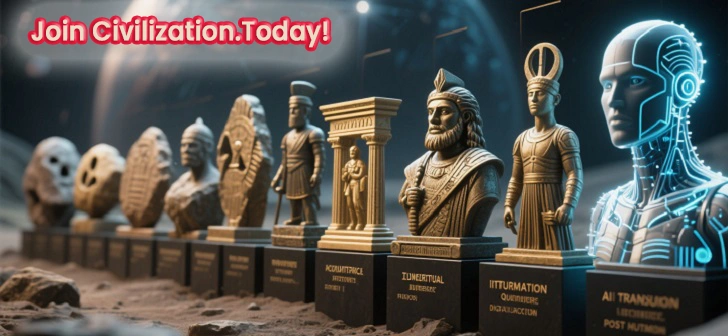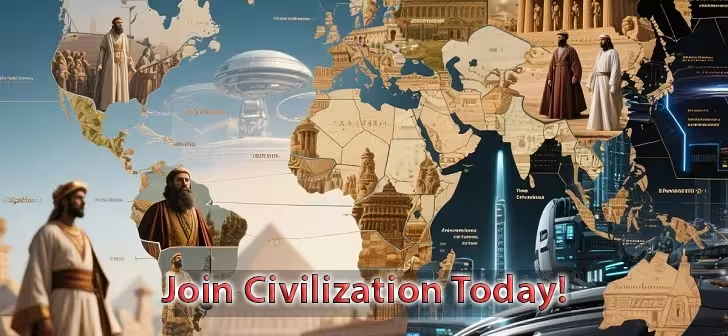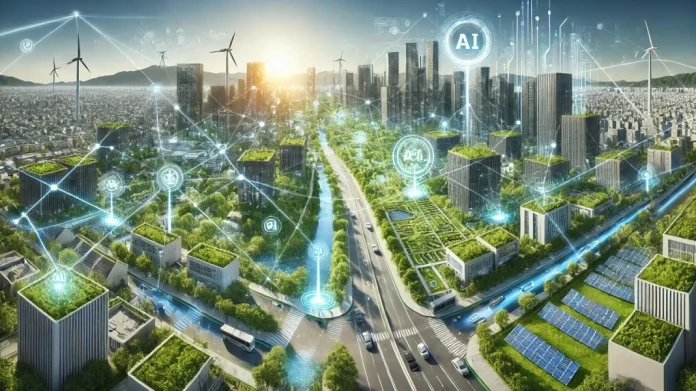Imagine waking up in a city that knows your daily routine better than you do. Your home adjusts the temperature before you get out of bed, traffic lights optimize your commute in real time, drones deliver your coffee within minutes, and waste disposal happens without a single garbage truck. This isn’t the plot of a sci-fi movie—it’s the emerging reality of AI-Powered Cities.
As artificial intelligence continues to reshape industries, one of the most ambitious applications is in urban planning and smart city development. These futuristic cities promise cleaner environments, smarter infrastructure, and a quality of life previously unimaginable. But how exactly do they work, and what challenges do they face? Let’s dive into the blueprint of future living.
What Are AI-Powered Cities?
AI-Powered Cities are urban areas where artificial intelligence systems manage and optimize various aspects of city life. Unlike traditional cities, where decisions are made by humans based on historical data and fixed plans, AI-powered environments make real-time decisions using a constant stream of data from sensors, cameras, and connected devices.
In an AI-Powered City, algorithms oversee:
- Traffic flow and public transportation schedules
- Energy distribution and consumption
- Waste management and recycling
- Law enforcement and emergency response
- Public health and environmental monitoring
By integrating AI into the very fabric of city infrastructure, these systems can react instantly to changing conditions, predicting and preventing problems before they occur.
The Technology Behind AI-Powered Cities
The rise of AI-Powered Cities is made possible by the convergence of several cutting-edge technologies:
- Internet of Things (IoT)
Billions of interconnected sensors embedded in roads, buildings, and vehicles provide constant data streams. IoT devices act as the “nervous system” of the city. - Big Data Analytics
AI algorithms process enormous amounts of information to identify patterns, predict trends, and make data-driven decisions. - Machine Learning (ML)
Over time, AI systems learn from past events to improve their predictions, making the city smarter with every passing day. - 5G Connectivity
High-speed networks enable instant communication between devices, ensuring real-time responsiveness. - Autonomous Systems
From self-driving buses to automated street cleaning robots, these systems reduce human labor needs while improving efficiency.
Key Benefits of AI-Powered Cities
The promise of AI-Powered Cities extends beyond convenience. Here’s why experts see them as the future:
1. Traffic and Transportation Optimization
AI can reduce congestion by dynamically adjusting traffic lights, suggesting alternate routes, and syncing public transit schedules. Imagine never being stuck in rush-hour traffic again.
2. Sustainable Energy Management
Smart grids powered by AI balance energy loads, reduce waste, and integrate renewable energy sources efficiently.
3. Environmental Protection
AI monitors air and water quality in real time, automatically initiating countermeasures when pollution levels rise.
4. Enhanced Public Safety
Predictive policing tools analyze crime patterns, while AI-powered surveillance detects suspicious activities instantly.
5. Improved Healthcare
AI-driven health monitoring can detect disease outbreaks early and provide personalized healthcare recommendations.
Global Examples of AI-Powered Cities in Action
Several cities are already pioneering the AI-powered approach:
- Singapore. Uses AI for traffic management, environmental monitoring, and predictive healthcare.
- Barcelona, Spain. Employs smart lighting and waste management systems to reduce costs and emissions.
- Songdo, South Korea. Built from the ground up as a smart city with AI-driven infrastructure.
- Dubai, UAE. Plans to integrate AI into every aspect of governance and city services by 2030.
These examples show that the transition to AI-Powered Cities is already underway—and accelerating.
Challenges in Building AI-Powered Cities
Despite the promise, the road to fully functional AI-driven urban environments isn’t without obstacles:
- Data Privacy Concerns
Massive data collection can lead to surveillance fears if not handled transparently. - High Implementation Costs
Smart infrastructure requires significant investment, which can be challenging for developing nations. - Cybersecurity Risks
AI systems connected to essential services are prime targets for hackers. - Ethical Decision-Making
When AI makes real-time decisions, who is accountable if something goes wrong? - Social Inequality
Access to AI-powered benefits may not be evenly distributed across all socio-economic groups.
A Blueprint for the Future
Designing a successful AI-Powered City requires more than just technology—it demands a balanced approach that addresses governance, ethics, and community engagement. A practical blueprint includes:
- Transparent Data Policies. Residents must understand how data is collected, stored, and used.
- Public-Private Collaboration. Governments, tech companies, and citizens must work together.
- Scalable Infrastructure. Start small with pilot programs, then expand citywide.
- Cybersecurity Frameworks. Protect critical infrastructure from digital threats.
- Inclusivity Programs. Ensure AI benefits reach all residents, not just the wealthy.
Why the Future Is Unstoppable
The momentum behind AI-Powered Cities is undeniable. According to market forecasts, global spending on smart city technology is expected to exceed $2 trillion by 2035. With climate change, rapid urbanization, and population growth putting pressure on resources, AI-driven urban planning could be the most effective way to create livable, sustainable cities.
Final Thoughts: Living in Tomorrow’s World
In the near future, AI-Powered Cities will not be an experimental concept but a global standard. As technology continues to evolve, these cities will become more efficient, sustainable, and livable than ever before.
The real question is not if we will live in AI-powered cities, but when. And when that day arrives, the daily conveniences we take for granted will be powered by an invisible intelligence that works tirelessly behind the scenes—making our cities cleaner, safer, and smarter.
The rise of AI-Powered Cities is more than a technological shift—it’s a transformation in how we experience urban life itself. The future isn’t just coming; it’s already under construction.




